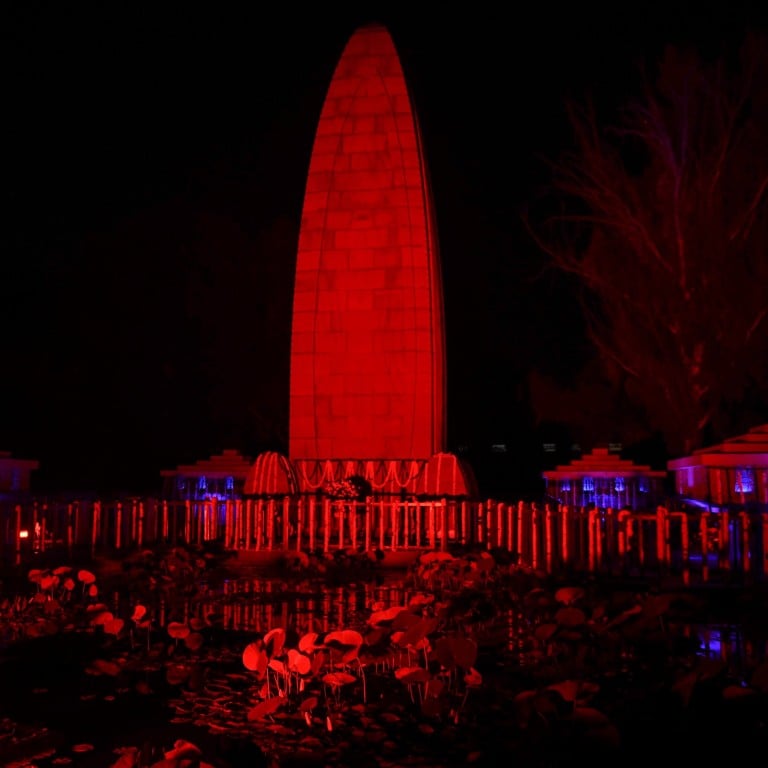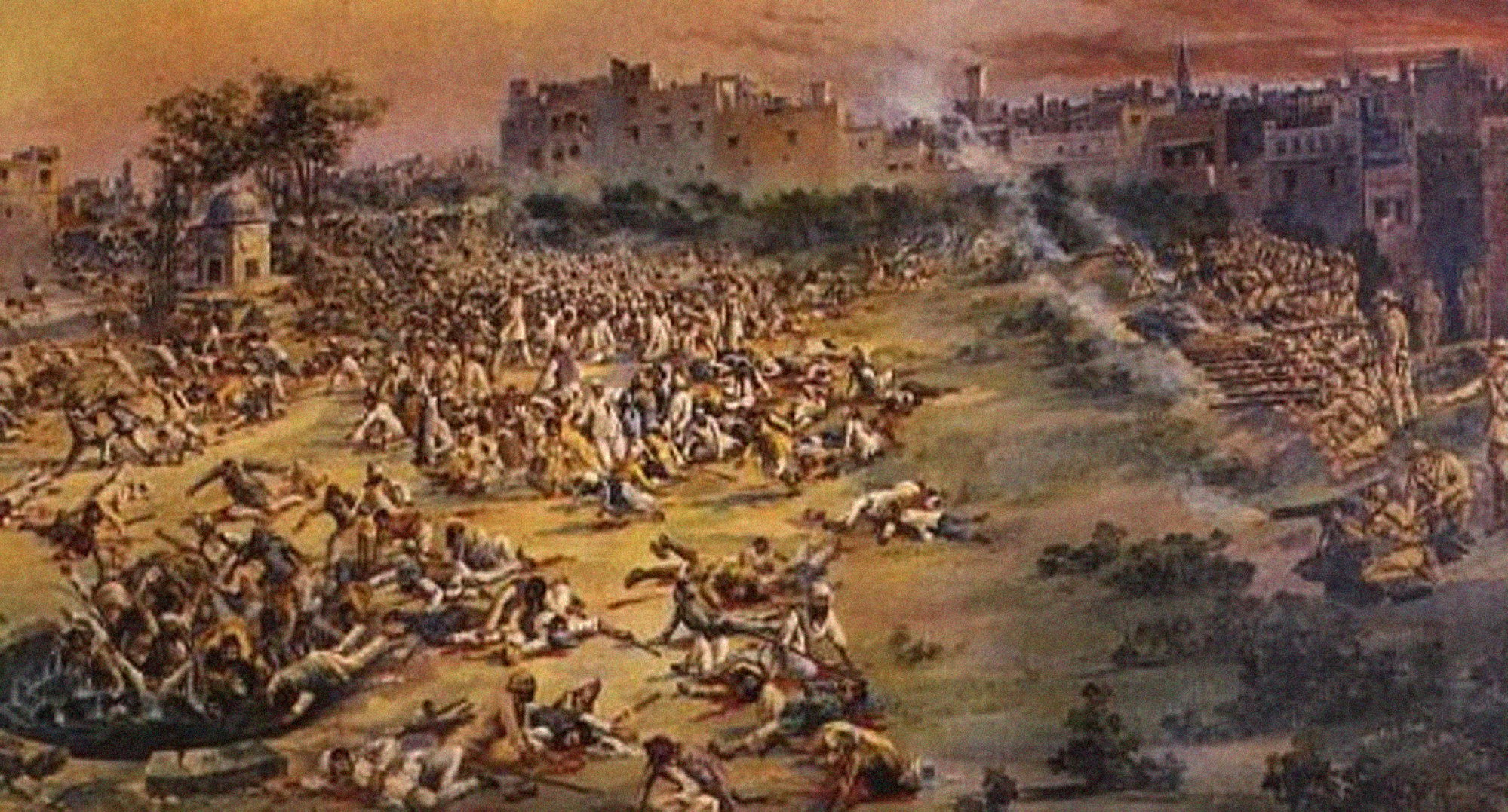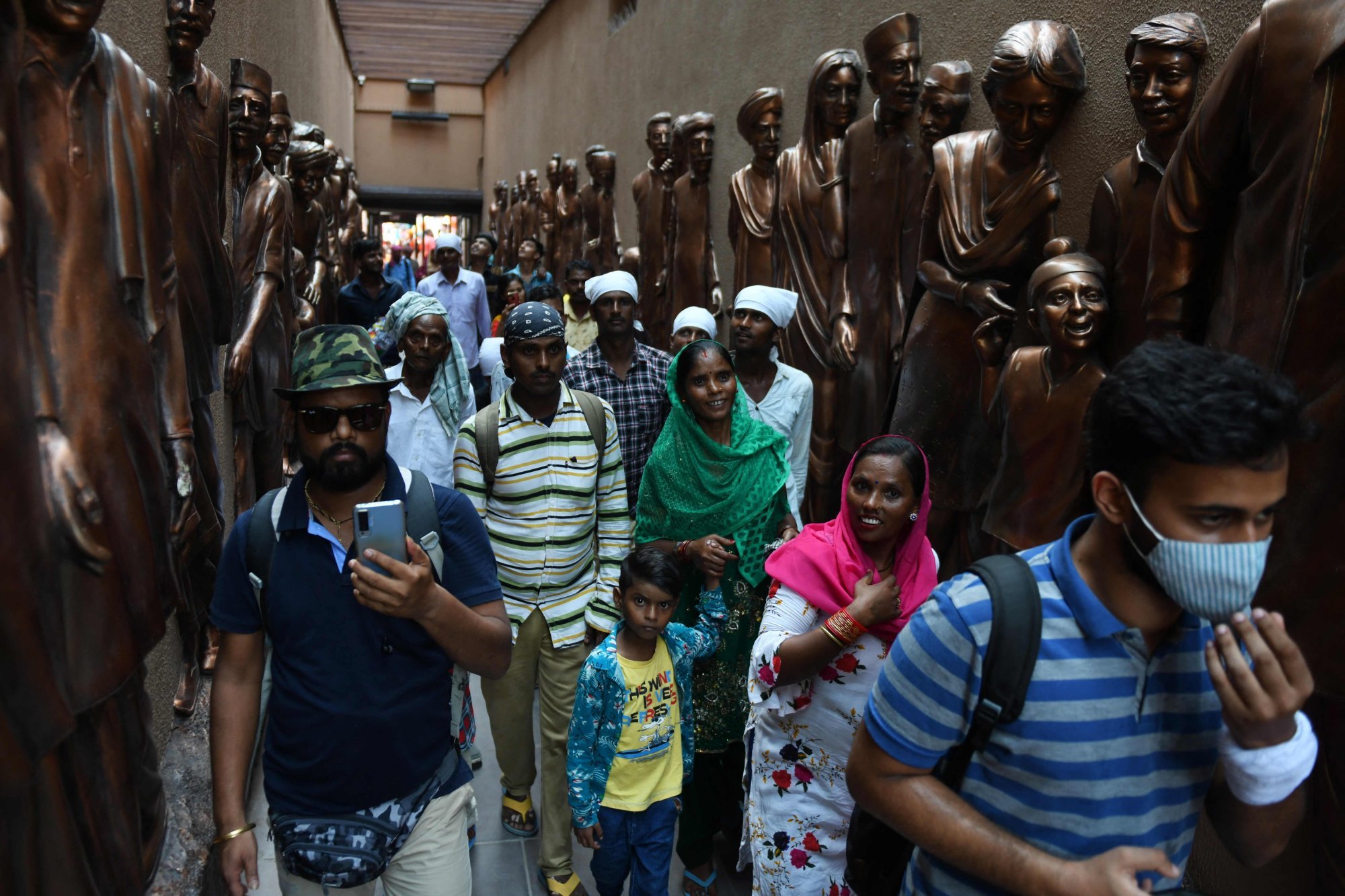
Explainer | What happened in the 1919 Jallianwala Bagh massacre of Sikhs in British-ruled India?
- British police are holding a 19-year-old man who broke into Windsor Castle where Queen Elizabeth was spending Christmas
- He purportedly made a video claiming he was an Indian Sikh who would attempt to ‘assassinate’ the monarch as revenge for the Jallianwala Bagh incident
British police are investigating a video that is circulating on social media, purportedly of a man who is now in custody and being treated for mental health issues.
The man also said in the video that he was seeking revenge for those who have been killed, humiliated and discriminated against because of their race.
What happened in 1919?
On April 13, 1919, Brigadier General Reginald Edward Harry Dyer, an officer of the British Indian Army, ordered a squad of local soldiers to open fire into a 182-metre-long enclosed space in the northern Indian city of Amritsar, where more than 20,000 residents had gathered to protest against implementation of a colonial law that gave unlimited powers to the government to imprison people without trial.
The meeting had taken place despite Dyer’s orders that not more than four people could assemble. The soldiers continually fired 1,650 rounds of bullets for over a period of 10 minutes without giving the crowd any warning to disperse. Most people were stuck in the narrow passageway of the Jallianwala Bagh for entry and exit that was circled by the backs of abutting brick buildings.
Author Anita Anand in her book, The Patient Assassin: A True Tale of Massacre, Revenge and the Raj, wrote that the number of people killed in the massacre has always been in dispute as British estimates stated 379 people died and 1,100 were injured while the Indian estimates said that 1,000 people perished and more than 1,500 were injured. The youngest victim was a six-month-old infant.
The firing happened on the day of “Baisakhi”, the beginning of the Sikh New Year, and the Sikhs made up 30 per cent of those who were killed while Hindus comprised 55 per cent and the rest were Muslims.

How did the British army and the monarch react to it?
Winston Churchill, who was the Secretary of State for War and Secretary of State for Air, condemned the shooting. In the House of Commons (UK parliament), he said that the government had to make it absolutely clear that this is not the British way of “doing business.”
Edwin Montagu, the then Secretary of State for British India government, was forced to institute an eight-member inquiry committee headed by Lord William Hunter, former solicitor general of Scotland. Members who disagreed with the majority’s finding issued their own report, where they found that Dyer, the officer, had made up his mind to shoot all the people to death if they were going to continue with their protest.
The report quoted Dyer as saying: “They [the crowd] had come to fight if they defied me and I was going to give them a lesson.”
‘Disney-fied’ revamp of India’s Jallianwala Bagh memorial sparks stormy debate
Dyer’s actions were considered “bona fide” by the then Viceroy and the senior representative of the British monarch, Lord Chemlsford, and his executive council, the highest governing body in British India.
The Commander-in-Chief of the Army asked Dyer to resign from the post of Brigade Commander and did not give him any further employment in India.
Balraj Purewal, coordinator of Panjabis of Southall, the non-profit that preserves the heritage and history of the “first generation” Punjabis, primarily Sikh immigrants in the west London district, said: “Every institution in the UK – the monarch and the parliament – was responsible for the massacre. It wasn’t the handiwork of a lone ranger, Dyer, but the British India’s mindset that no agitation that posed a threat to them will be tolerated.”
Did the British ever apologise for the massacre?
In 2019, Queen Elizabeth, whose grandfather King George V was the reigning monarch in 1919, laid a wreath of flowers at the towering red stone Martyr’s memorial, a site constructed by the Indian government in 1961 and observed a 30-second silence. She did not formally apologise for the episode.
In 2017, London mayor Sadiq Khan, who is of Pakistani descent, called on the British government to make a formal apology for the carnage.
In 2013, Prime Minister David Cameron became the first serving British official to visit the site where he paid tribute to those who died. In the visitors’ book, he said it was a “deeply shameful act” in British history but he did not offer a formal apology.

How did Indians react then and how do they feel now?
For Indians, General Dyer became a symbol of British oppression. In 1939, Udham Singh, a Sikh, killed Sir Michael O’ Dwyer, who was the lieutenant governor of Punjab then and endorsed Dyer’s actions to fire at unarmed civilians at Jallianwala Bagh. A statue of Udham Singh was unveiled outside Jallianwala Bagh.
The killings also triggered a freedom movement calling for an end of colonial rule in India. The country gained independence in 1947.
The Punjabi-dominated Indian Workers’ Association (IWA), the oldest Indian migrants group in the UK, have been campaigning for over eight years demanding an apology for the worldwide Punjabi community from the British prime minister, the country’s parliament and its second chamber, the House of Lords.
The real Darkest Hour: Churchill’s role in murdering 3 million Bengalis
Back in Amritsar, a move by the Narendra Modi-led government to “renovate” the massacre site has faced criticism.
The narrow alley blocked by British soldiers on the fateful day stopping everyone from escaping the site, now has a shiny new floor. The bullet marks on the walls have been erased and the gallery is embossed with sculptures now.
“It’s unfortunate that India has destroyed this horrific part of history by erasing the bullet marks on the alley,” lamented Harsev Bains, vice-president of the IWA.

Why did a young Sikh react to the massacre after so many years?
Panjabis of Southall’s Purewal said that the massacre resonates with every Sikh and Punjabi. “The cry for restorative justice is there in every Sikh,” he said. “Ideally, the Indian government should demand accountability from the UK for the crime against humanity that took place 100 years ago. Why has the Indian government thrown the dreadful memories of massacres by British India into the dustbin?”
Canada-based Jatinder Singh, national director of Sikh non-profit, Khalsa Aid, said that initially, journalists or opinion pieces in media defended the killings and used the same narrative perpetuated by the British Raj after the massacre but now there is a push for Britain to confront its colonial past.
Stressing that British colonial history should be taught in schools and colleges in the UK, Bains added that the youth in Sikh community know about the Jallianwala Bagh massacre thoroughly.
But he said that many young people get carried away by the emotions attached to the massacre of Sikhs and the legend of Udham Singh while the larger Sikh community wants an apology, not revenge.
